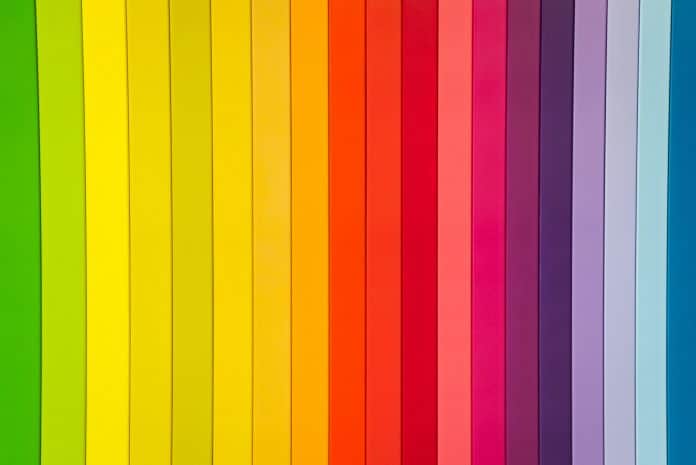Last updated on March 8th, 2024 at 11:10 am
If you’re a marketer or a small business owner, you’ve probably spent a lot of time thinking about the concept of branding for your business.
Specifically, the use of color in your branding and marketing. Are you sure you’re using the right colors?
Today, I want to give you a primer on the basics of color. I’ll give you some background info, as well as some great tools to help you better understand what goes into choosing color(s) for your website, marketing materials, or blog.
With this primer, you’ll be able to determine what colors work and what colors don’t, as well as have the framework for finding a great color scheme for your project.

Before you start: The Color Wheel

Most graphic designers will probably tell you that one of the most important tools available when considering a color is the color wheel.
Believe it or not, the color wheel is something that’s been around since the mid 1600s(!) and Sir Isaac Newton created one of the first color wheels.
This article from Macworld sums up the color wheel nicely:
“The simplest way to pick colors is to use a color wheel—a circular diagram of colors arranged by their relationships with one another. A color wheel is based on the three primary colors: yellow, blue, and red, from which all other colors spring. By mixing equal amounts of the primary colors, you get a second set of colors called secondary colors. Mixing equal parts of the secondary colors gives you a third set of colors called tertiary colors.”
You can also use this tool from Sessions College to help you choose a color scheme easily, and give you a preview of what the colors you choose will look like when placed together.
Color Harmony
There are a few different types of geometric relationships on the color wheel organization that make up what’s known as “color harmony,” or the relationship of colors to each other.
Take a look at this in-depth look at what makes up color harmony, but here are a few of the main techniques for combining colors based on the color wheel:
- Complementary – colors opposite each other on the color wheel organization
- Analogous – colors next to each other
- Triad – evenly spaced colors
- Split-complementary – a base color with two complementary colors
- Rectangle – a rectangular set of colors in two complementary pairs
- Square – four colors spaced evenly around the color circle
Choosing the right color harmony is something that might take some getting used to, but it’s an essential part of choosing the colors for your project.
Color Context
Once you have found some colors you like using the Color Wheel, it’s important to consider the context of those colors.
For instance, take a look at this image, with a red square amongst some different background colors:

Although each background color is different, the red square in the middle is the same color in each square. Notice how the red square “changes” depending on the background.
The black square makes the red square look larger than it does on other squares. It’s important to keep the context of colors in mind when you choose your colors.
Here’s another example where the inner rectangle is the same color in each square:

But notice how the rectangle on the left seems to be a different color when compared to the rectangle on the right? This is the relativity of color, and it changes based on other colors, sizes, etc.
Small business need to consider color in all their marketing and design projects. Make sure you are using the best color combination on all your design projects.
Try to keep this in mind when you’re choosing your colors, and make sure you’re confident with your choices before proceeding.
Color Psychology
The other key component of choosing a color involves paying attention to color psychology. Colors can evoke certain emotions in all of us.
Think about how you feel when you see a color like this:

While a person’s feelings about color are obviously quite personal, culturally there are many different uses of color to represent specific symbols. The color white is commonly used as a symbol of purity or innocence.
When you’re trying to come up with some colors to use for your website, logo, or newsletter, try and keep the psychology of your color choices in mind.
Some additional tools you can use
Here are some additional tools to use when you’re deciding on the specific colors to choose for whatever your project is:
- colr.org – lets you upload an image and see the range of colors within that image
- Khroma – use AI to find color pallets that you love
- Adobe Colour CC – lets you try out and create different color schemes
- Coolers – generates thousands of trending color pallets
You can find a comprehensive list of 28 color scheme tools over at Creative Bloq.
What kind of color design tips do you have? Let us know in the comments section below!







